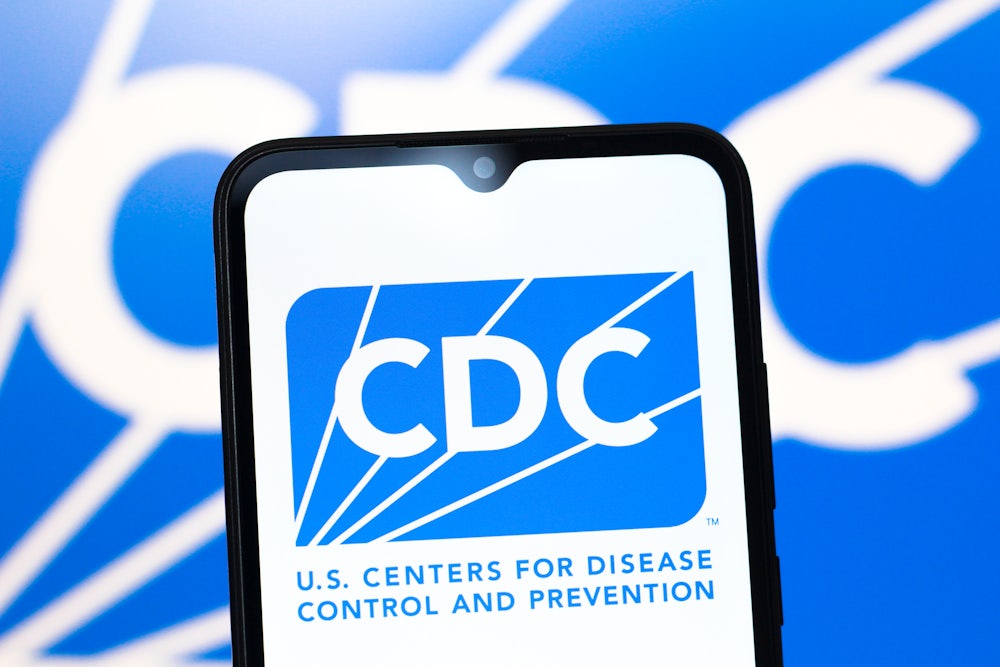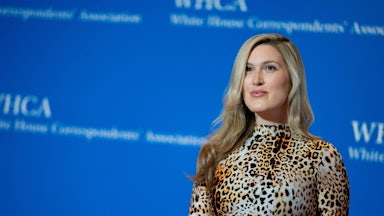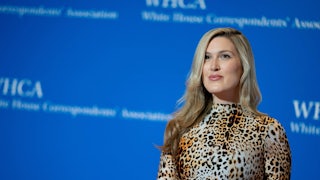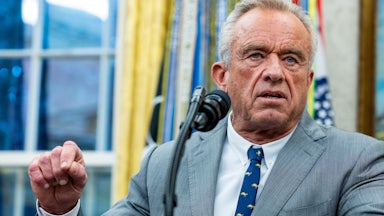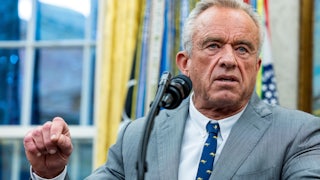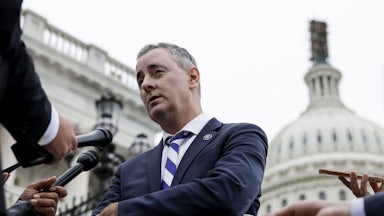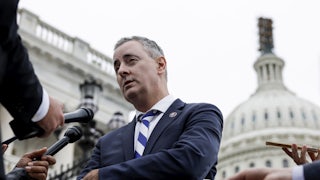President Donald Trump’s efforts to dramatically reshape the federal workforce and slash spending has brought chaos to Washington, D.C., and spawned a bevy of legal cases as newly unemployed members of the civil service attempt to save their jobs and their work. But these moves will likely have long-ranging consequences far beyond the Beltway, especially in the arena of national public health, with experts warning that the country will emerge from this purge less effective at monitoring and responding to future crises.
The actions by the Trump administration have been sweeping and swift. The administration’s efforts to rid the government of nearly all probationary employees has resulted in mass layoffs, including the firing of thousands of employees at the the Department of Health and Human Services late last week. Those cuts include layoffs affecting hundreds of employees at the Centers for Disease Control and Prevention, as well as mass firings at the National Institutes of Health, or NIH.
These terminations come amid an outbreak of avian influenza that is decimating poultry flocks and may become more widespread among humans, a measles outbreak in west Texas, a tuberculosis outbreak in Kansas City, Missouri, and a surge in cases of the seasonal flu. “If we have fewer experts working to prepare for and detect and respond to outbreaks of infectious diseases, then as a whole, the American people will be less healthy and less safe,” said Amanda Jezek, senior vice president of public policy and government relations at the Infectious Diseases Society of America.
If there are fewer employees to surveil developments, and lower capacity for on-the-ground testing, the response to current and future outbreaks would be delayed; this, in turn, would allow diseases to spread and make future outbreaks more difficult to contain, Jezek continued.
There is confusion as to who, exactly, had been fired—according to CBS News, some probationary employees did not receive termination letters, while others received them in error. The firings at CDC were initially expected to affect more than a thousand employees, but the number ended up being closer to 750 employees. A key fellowship which provides on-the-ground tracking of epidemics was on track to have its ranks halved, although the Trump administration appeared to reverse its decision, in a further indication of the instability surrounding these decisions. Other layoffs hit a critical U.S. Department of Agriculture office handling the avian flu response; the USDA later said that those firings were in error, and that it is trying to reverse those firings. (The hasty firing of essential workers, only to reverse course on later review, was one of the hallmarks of Elon Musk’s early days at X, the social media site formerly known as Twitter; Musk is now overseeing the Department of Government Efficiency, which is spearheading these cuts.)
Shelley Hearne, the director of the Lerner Center for Public Health Advocacy at the Johns Hopkins Bloomberg School of Public Health, compared the administration’s current approach to an overzealous surgeon using a buzz saw to chop a sick patient’s limbs indiscriminately.
“The way it’s being done is without an eye towards efficiency, just categorically cutting bodies where they can most easily do it,” said Hearne. “Every administration has the right to make changes, to try things differently, to bring in their own personnel; but if you’re going to do reforms, do it with a plan. Do it with precision, not with a chainsaw.”
Hearne highlighted the resignation of Jim Jones, the director of the Food and Drug Administration’s food division, who stepped down this week due to “indiscriminate” firings of staff. While Jones would be perfectly positioned to investigate some of the food-related issues that newly confirmed HHS Secretary Robert F. Kennedy Jr. has cited in his Make America Healthy Again agenda, the layoffs are instead resulting in a loss of institutional knowledge.
There is also the potential for trickle-down effects for institutions across the country. David Fleming, the chair of the advisory committee to the CDC director, noted that much of the agency’s budget helps fund activities by state and local health departments, universities, and community-based organizations.
“Reducing the workforce at CDC in an indiscriminate way will affect the agency’s ability to fulfill their jobs of assuring those resources are being used wisely, and in partnering with state and local health departments and universities to make sure that both practice and research is doing what it needs to do to best protect this country,” Fleming said.
The Trump administration’s strategy of layoffs will also affect the future of biomedical research. This week, nearly 170 employees were fired from the National Science Foundation—some of whom had completed their probationary period—including program managers who help determine which research projects should receive federal grants. Scientists who receive funds from the NSF were already living in fear about the future of their research, worried that Trump’s orders targeting diversity, equity, and inclusion initiatives could result in their projects being flagged as out of alignment with the administration’s priorities.
Although a plan to slash federal funding to research institutions by the NIH has been temporarily blocked in court, there is a pall hanging over the future of research.
“NIH is the source of dollars going out there of cutting edge advances in treatment and pharmaceuticals,” said Hearne. She credited the swift development of the Covid-19 vaccine during the first Trump administration to the research and work of the NIH.
“So if we have another event [like Covid-19], worries are, would we have another rapid response as we did?” Hearne said. “I’m worried [about] our ability to track those diseases, to have the investigators who catch it early and stop it, or who are investigating what’s causing it, or who are involved in how to treat it quickly, whether it’s vaccines or pharmaceuticals.”
The layoffs, and the uncertainty surrounding them, will also likely have far-reaching implications for would-be public health officials now discouraged from seeking a federal position. Moreover, as the bulk of the layoffs affected probationary employees—people who are typically early in their careers—it undercuts the efficacy of the future workforce, said Fleming.
“It makes no sense that if you’re looking to increase efficiency, that you would start with [firing] your newest, brightest talent, and people who have been promoted as a result of your confidence,” Fleming said.
He also noted that, demographically, many officials working in public health are older, and nearing retirement. “The nation really is in desperate need of young, bright, emerging leaders to fill the spaces in the mid and top leadership posts that are going to become open in the next few years,” Fleming continued.
The immediate-term impacts of the layoffs are compounded by uncertainty around the administration’s response to current problems. Even as a measles outbreak hit a community with relatively low vaccination rates in Texas, Kennedy said this week that a panel would evaluate the childhood vaccine schedule. The firings may further contribute to the unstable information landscape around health issues.
“We want families to have information about vaccines. Vaccines are the best defense against measles, and the measles vaccine is safe and effective,” said Jezek. “When we have either a smaller public health workforce or limitations in what that public health workforce is permitted to do and what they’re permitted to communicate, then that puts more families at risk for not having good, evidence-based information to make decisions.”
